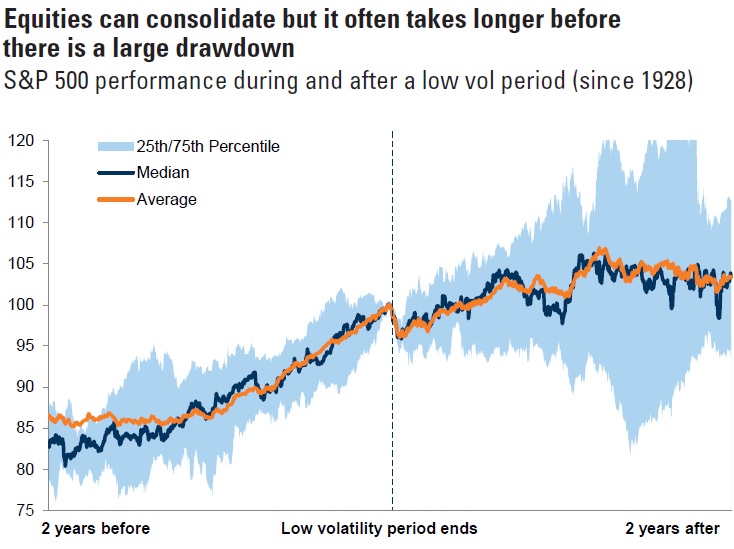The low volatility that’s frustrated traders gives longer-term investors all the more reason to buy stocks, Goldman Sachs portfolio strategists say.
The CBOE volatility index (VIX) briefly fell earlier this month to its lowest in more than 23 years, while the S&P 500 has closed at least 1 percent higher or lower on four times this year. Potential shocks from North Korea, China and political unrest worry many on Wall Street that markets are too complacent, especially since U.S. stocks at record highs appear expensive.
However, “being underinvested during such periods can be costly,” Goldman equity strategist Christian Mueller-Glissmann said in a report. He noted that periods of low volatility tend to see above-average returns for risky assets like stocks.
“For example, cumulative price returns since 2009 are 172 percent for the S&P 500, compared with just 26 percent if the 10 highest return days each year were missed,” he said. “You have to be in it to win it.”
Even if volatility returns, historical trends show the average stock market decline has been less than 5 percent when volatility increases again, Mueller-Glissmann said. The market then typically moves into a period of greater volatility, before stocks drop further as the economic backdrop worsens, he said.
Volatility also tends to pick up toward the end of a central bank rate rise cycle, the note said.
The Federal Reserve this month raised short-term interest rates for the fourth time since December 2015 and the second time this year. The central bank expressed upbeat sentiment about economic trends and for now is expected to continue hiking rates periodically.

Source: Goldman Sachs Global Investment Research.
Economic reports continue to point to steady, albeit sluggish, growth. The May reading for the Institute of Supply Management’s manufacturing gauge for the U.S. came in at 54.9, up 0.1 from April. A reading above 50 indicates expansion. In such periods of ISM reports above 50 and rising, one-month volatility for the S&P 500 tends to be lowest on average, the Goldman note said. On the other hand, volatility tends to increase after ISM turns lower, falls below 50 and continues to decline, the report said.
To be sure, several market strategists expect stocks to pull back this summer, including Jeffrey Gundlach, CEO and CIO of DoubleLine.
He said last week that traders should be raising cash “literally today” and said he expects volatility to pick up later this year.
Not being invested in a low-volatility market 'can be costly,' Goldman Sachs says